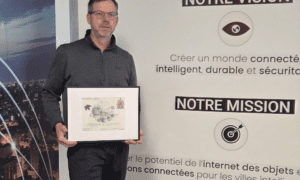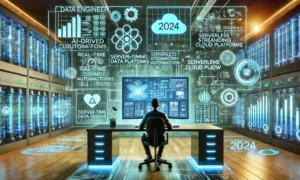The world we live in is full of powerful artificial intelligence that has created vast unseen difficulties, especially in the area of altered images changing real-life pictures to AI-generated manipulated faces. As the more powerful and increasing number of these magnificent digital reproductions emerges, there is a grave concern and need for effective methods to detect such digital reproductions.
This article aims and digs deeper into the complex world of face swap technologies, and software, defining the tools and techniques for you to grab the reality and to define a distinctive difference between real and Ai generated images.
Diving Deep Into DeepFake Dilemma
Deep Fake is a cluster of both deep learning and fake which involves the creation of pictures and videos that perfectly swap one person’s facial features into another. Deep Face images are generated with the help of modern machine-learning methods and algorithms which are relatively perfect at generating manipulated images from the original ones; these are generally based upon Generative Adversarial Networks.
Main purpose and objective of DeepFake
Face swap is to manipulate and render the original images containing faces and smoothly projecting it to another’s face. This caused significant consequences in various fields including politics, cyber security, and entertainment sectors, creating a profound capacity to identify modified images and faces to preserve and safe integrity in the digital world.
Detecting Deepfakes
A combination and multifunctional techniques of deep neural networks, machine learning, and image analysis are employed to identify the manipulation of images and videos.
- Analyzing Of Facial Features
Microscopic manipulation-related abnormalities are one of the greatest indicators of a Deepfake. These abnormalities include abnormal shadows, artificial lighting, and some slight differences in facial expressions. These can be easily detected by conventional image forensics such as noise and error level analysis.
- Deep Learning Algorithms
The difference between real and computer-generated images depends highly on machine learning models. Huge datasets of original and fake images are generally used to train deep-learning classifiers so they can easily capture and identify minor patterns and abnormalities. Mostly Convolutional Networks are used for this, of their despicable ability to recognize the complex features within the images.
- Time-Dependent Analysis
As time passes by deepfakes find it very difficult to maintain the facial features, expressions, emotions, and movements constant. It involves the examination of the face’s consistency across the video or image. This analysis involves the signs and indicators such as abnormal head movements, changes in expression, and abnormal blinking.
- Geo-Metrical Analysis
Genuine faces have a clear steadiness in facial expressions, geometry, and features. To verify the generosity of fake images, and to check whether the facial structure is in proportion to human variance, these detection algorithms distinctively analyze the facial structures, expressions, and other biometric properties.
- Determining The Liveness
The liveness detection techniques and methods evaluate the face in the target to grab clear evidence of liveness and to counterbalance the deep fake image. These algorithms include examining the small gestures, and micro expressions or even completing a particular small task.
- Forensics Algorithms
These algorithms are used generally by deepfake detection technologies to examine and dissect certain irregularities. They imply various methods making it more user-friendly to people and organizations to protect themselves from the dangerous counterfeit material in the digital world.
- Authentication By Ai
Artificial intelligence-generated software and tools are being currently used for facial recognition to confirm and preserve real identity. They use a complex structure of networks to capture certain abnormalities in facial expressions and emotions.
Case Study: Swap Face with AI
Let’s talk about using AI to switch faces, making fake faces that are pretty cool. With the help of artificial intelligence, swapping faces has become a fun way to get creative. This article dives into the world of face-swapping tools, where technology meets imagination. Get ready for a journey into the cool and imaginative realm of creating fake faces with the help of AI.
One standout player in the world of face-swapping is the ingenious tool known as Face Swapper. This nifty technology takes the excitement of swapping faces to a whole new level. Whether you’re looking to have a good laugh by switching faces with friends or family or aiming to create amusing memes using popular templates, Face Swapper has got you covered.
What sets Face Swapper apart is its diverse range of interesting photo and gif presets, giving users the freedom to personalize their creations. The real-time face-swapping feature ensures a speedy and seamless delivery of transformed images. Not to mention, the tool allows users to dive into the animated side of fun by swapping faces into provided gif templates.
Swapping faces with Faceswapper AI is super easy! Just follow these steps to have some fun with your photos:
- Visit Faceswapper Website:
Open your web browser and go to Faceswapper AI’s website. Create an account to get started with 20 free credits. You can use this tool for free, and signing up gives you more credits to enjoy face-swapping.
- Upload Your Base Photo:
Click “Add photo” to upload the photo you want to work on. It can be a JPG or PNG file.
Select Faces to Swap:
Once your photo is uploaded, identify the faces you want to swap. The tool can automatically detect faces, or you may need to select them manually. You can also upload another photo with a face you want to use.
- Start Face Swapping:
Click “Swap Face Now” to let the AI do its thing. Faceswapper AI will analyze the faces and create a new image with swapped faces.
Preview the Result:
After the process is done, preview the result on the same page. Click the compare button to see the original and swapped faces side by side.
Ethical Concerns
Deepfake detection systems and algorithms involve the proper examination of facial features and characteristics which makes it a justifiable privacy concern. Ethical measures must be considered to maintain a balance between protecting people from fake images.
The possibility of biases in the data sets that train the detection algorithms could be unintentionally introduced which could lead to misidentifying certain groups of people. The detection systems must be fair to stop such discriminatory acts and to increase people’s confidence.
Final Verdict
In summary, in the efforts to decode and gain a clear pathway as to what is real and fake, we need to identify and eradicate the modified manipulated faces to help maintain the integrity of the digital content and media. Through the effective combination of a multi-faced approach that integrates machine learning, forensics, and modern algorithms, we can confidently distinguish between deepfake images.
To bypass these detection techniques and algorithms, deep fake systems are improving day by day. We can only reduce these hazardous deep fake images and protect the validity of digital content by working together and taking proactive measures. In this way, we could have the capacity to see and perceive between real-world images and artificial manipulations.



































